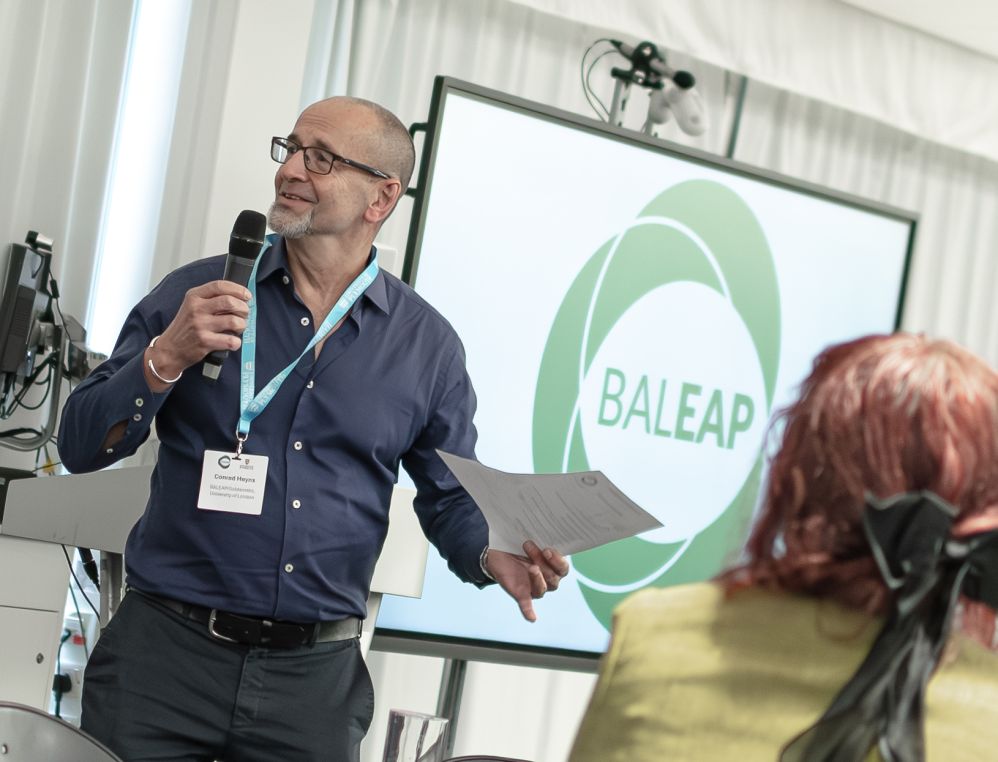Who we are
BALEAP supports the professional development of those involved in learning, teaching, scholarship, and research in english for academic purposes (EAP). Our work is built on four core values: professionalism, development, collaboration, inclusivity.
English for Academic Purposes (EAP) is a well-established and dynamic field operating in a range of international contexts. It is key to successful academic communication in all areas of academic study.
As a leading organisation in this field, BALEAP provides a forum for collaboration, research and sharing of practice through events, special interest groups (SIGs) and accreditation schemes.

Our expertise
BALEAP members are experts in specialised academic language instruction, needs analysis, syllabus and curriculum development and innovative pedagogy (or teacher education) in higher education, as well as in the development of specialised competencies in assessment design, implementation, and evaluation.
We have collaborated with and consulted for institutions and organisations nationally and internationally.
See below for our academic publications and research both BALEAP commissioned and from our membership.
Contact our chair for more information on consultancy.
Special Interest Groups
Our SIGs provide a collaborative space for people working in English for Academic Purposes to connect, share expertise, and engage in professional dialogue. These groups are designed to support the continuous development of teaching practices, curriculum design, research, and pedagogical innovation within the EAP context.
Research, Publications, and Resources
Open access to all our resources including podcasts, papers, conference materials, webinars, teaching & learning frameworks, and testing guidelines.
Events
Explore our Events section to discover a wide range of opportunities to get involved. There are free, online, and in person events which showcase recent research and scholarship in EAP, provide networking experiences, and support your development.
Awards & Funding
Explore our Awards section to discover current awards and funding opportunities that recognise achievement and support development across teaching, research, and professional practice. Previous funding outputs and submissions of past award recipients can also be found here.
Journals
Explore our Journal section to access the latest research and insights in English for Academic Purposes (EAP). The peer-reviewed journals features contributions from practitioners and scholars, offering evidence-based approaches, innovative ideas, and critical discussions to support your professional growth.
Accreditation
Our schemes facilitate the professional development of EAP teachers alongside establishing and sustaining the standard of specialist provisions in institutions to enhance the student experience.
Join us
Individual membership
Available to anyone in the academic community with an interest in EAP.
- Access our exclusive discussion list
- Discounted rates for events
- Connect with EAP practitioners globally
- Receive the JEAP journal free
- Participate in the TEAP Accreditation Scheme
- Concession rate available
Institutional membership
Available worldwide to any academic institution with EAP provision
- Developmental opportunities for all your staff
- Discounted rates to attend our biennial conferences and events
- Access to our exclusive discussion list
- Institutional subscription to the JEAP journal
- Voting rights at our Annual General Meetings
- Support to host an international or regional event
- Option to join our international EAP accreditation schemes
- Access to our global EAP community to advertise jobs for free
Associate membership
Associate Membership is available for non-teaching organisations with an interest in the activities of BALEAP, e.g. publishers and testing organisations.
- Access to our global EAP membership
- Discounted rates to attend our biennial conferences and events
- Discounted rates to exhibit at our events
- Exclusive opportunity to present lightning talks at events
- Option to sponsor an international or regional event
- Access our global EAP community to advertise jobs for free
Accreditation for institutions and individuals
BALEAP has accredited courses in institutions in the UK and internationally for over 30 years, ensuring a high standard of specialist EAP provision. Our scheme for individual members supports and facilitates professional development providing a widely recognised qualification.



